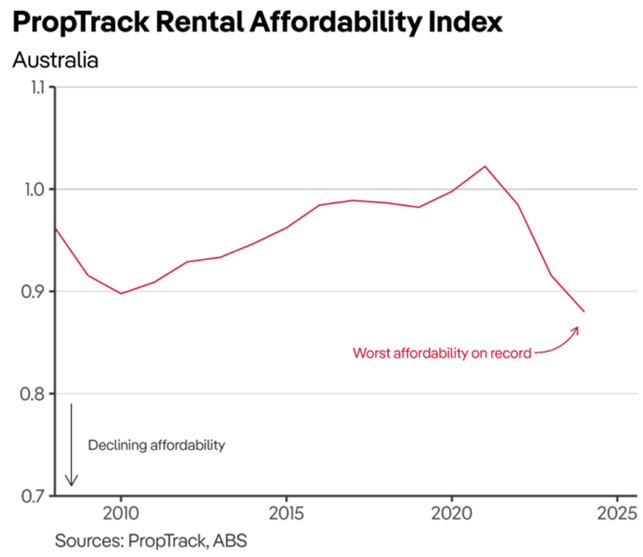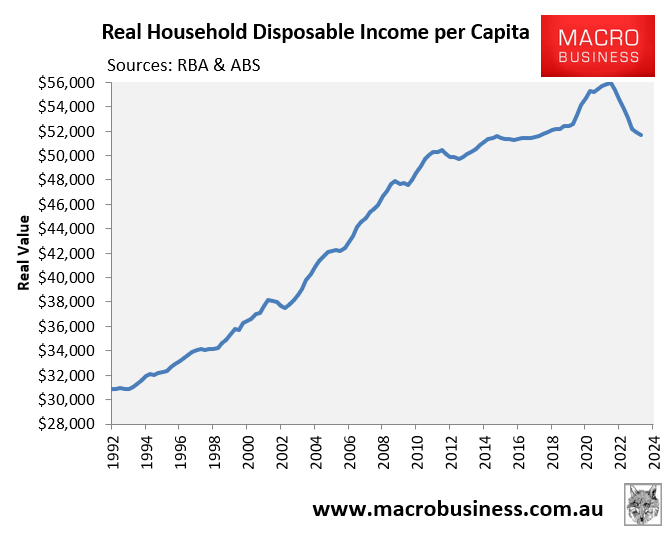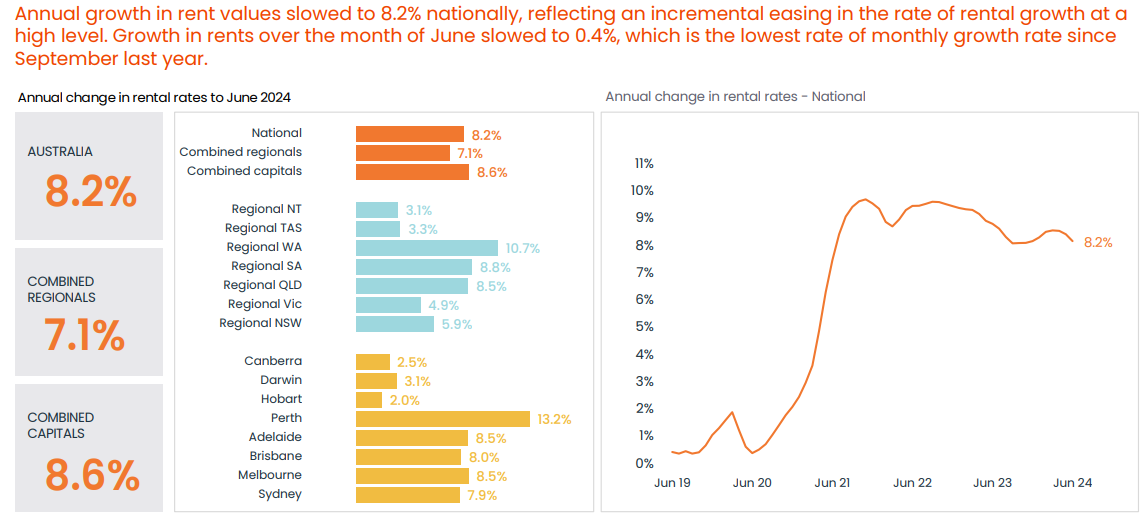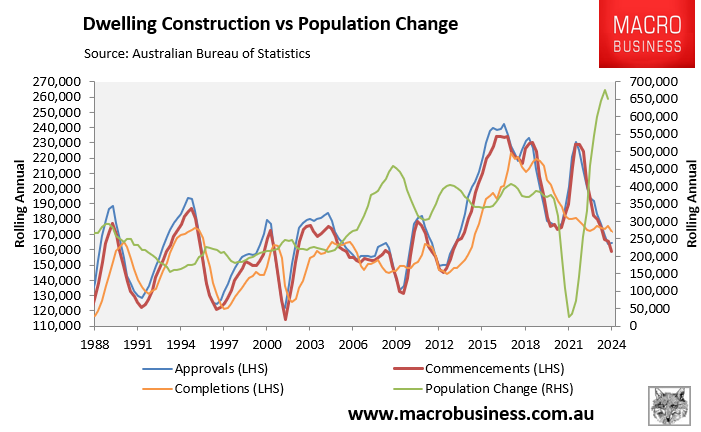PropTrack’s rental affordability index has collapsed to a record low, with households earning the median income of $111,000 only able to afford to rent the lowest share of properties since records began in 2008.

Unlike mortgages, rents cannot be leveraged. This means that rental growth tends to be tied to household incomes, limiting its potential increase.

And with household incomes stalling and rental inflation having run rampant for two years, rental growth has finally begun to moderate.

Source: CoreLogic
CoreLogic reported that rental growth slowed to 0.4% in June, which was the slowest rate of monthly growth since September last year. Other data providers also reported slowing rental growth.
“The fact that this year we’ve recorded a seasonal increase is suggesting to us the rental market is starting to return to more normal activity levels”, noted SQM Research managing director Louis Christopher.
“We are confident the days of 10% to 20% annual rental increases in most of the cities have come to an end or [are] about to come to an end”.
“We believe a lot of the bad news surrounding the rental market has now been priced-in to rents already”, he said.
That said, Christopher warned that the rental crisis remains in severe shortage and will likely remain so for some years.
He also said that tenants were responding to the situation by grouping together in shared housing to reduce their costs.
Indeed, a record number of Australians are reportedly living in group homes:
More than 350,000 Australians are living as part of a group household according to data from the Australian Bureau of Statistics (ABS) — more than ever before.
While the ABS defines group housing as a household consisting of two unrelated people where all the residents are aged 15 years or older, they’re also referred to as share houses.
Demand for this type of accommodation has skyrocketed amid an exceedingly tight rental market and affordability crisis — and it’s left people looking for alternatives.
Centre for Independent Studies chief economist Dr Peter Tulip also believes that the rental crisis will persist, claiming the situation remains “grim”.
“They probably won’t sustain the extremely fast increases that we’ve seen over the past year or two, but they will be going up substantially faster than other prices and substantially faster than incomes, so the outlook for renters is a very grim one”.
“We have a housing policy disaster in this country, and it’s going to get worse”, he said.
Whereas Domain chief economist Nicola Powell said that the affordability ceiling had been well and truly “smashed”.
“It is technically still a landlord’s market across Australia but what we’ve got is rental price growth has stabilised over the quarter”, she said.
“The affordability ceiling hasn’t been reached,” she said. “It’s been smashed.”
Wednesday’s dwelling construction data from the Australian Bureau of Statistics showed why the rental crisis will persist, with only 158,933 dwellings commenced in the year to March, against a population increase of more than 600,000:

So long as the Albanese government continues to import renters into Australia at a faster rate than homes can be built, we rental crisis will persist.
The solution is simple: slash immigration to a level below the nation’s capacity to build homes and infrastructure.

